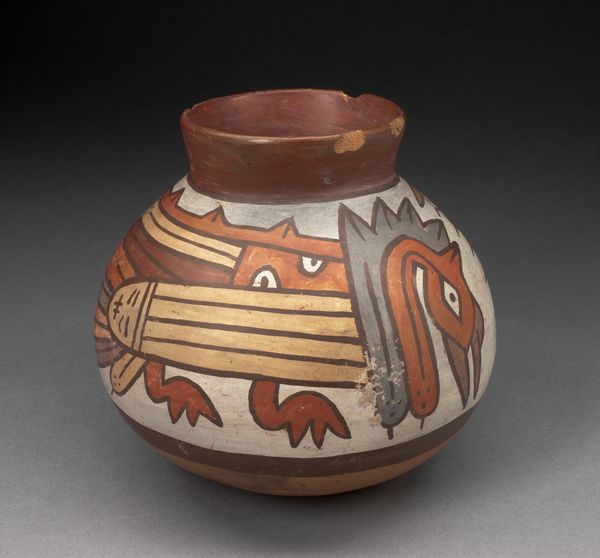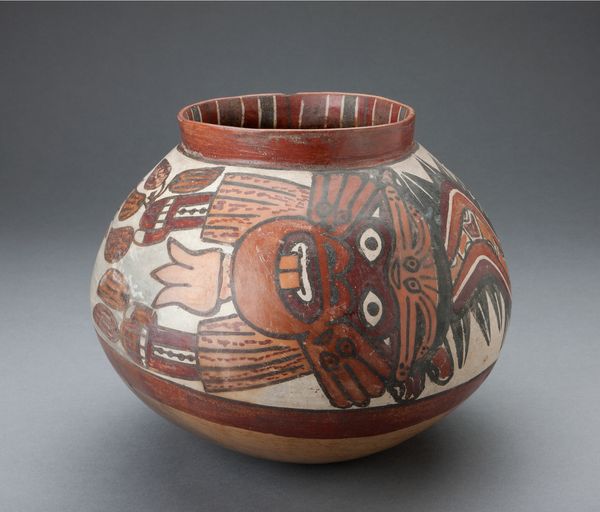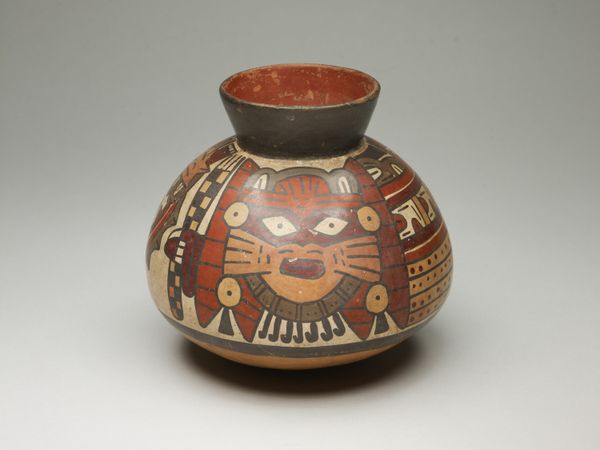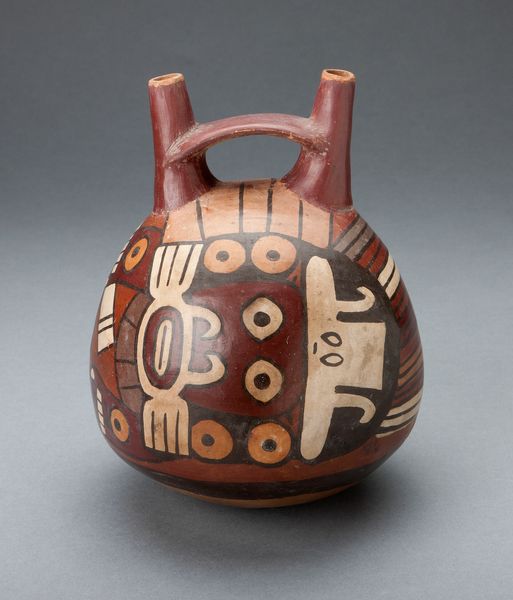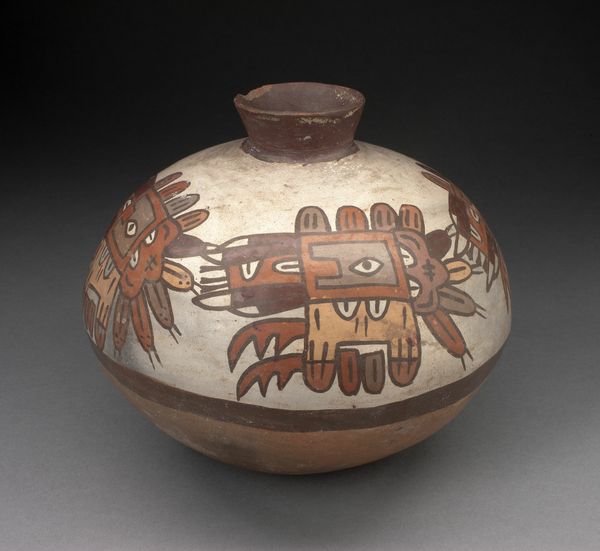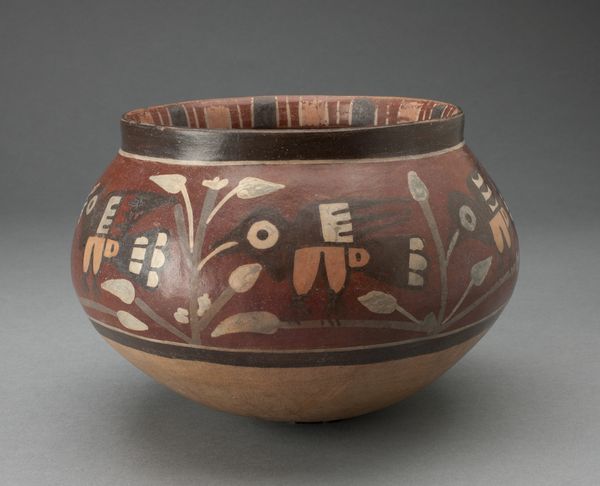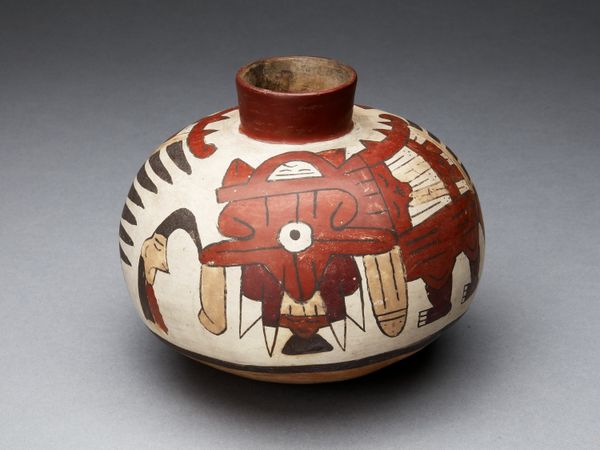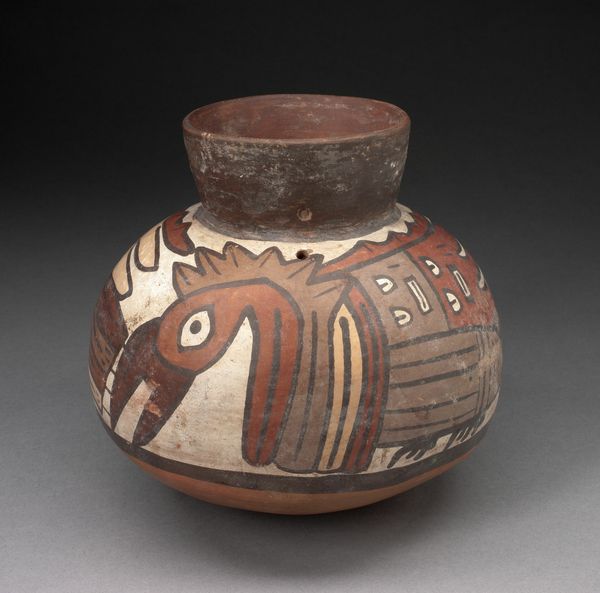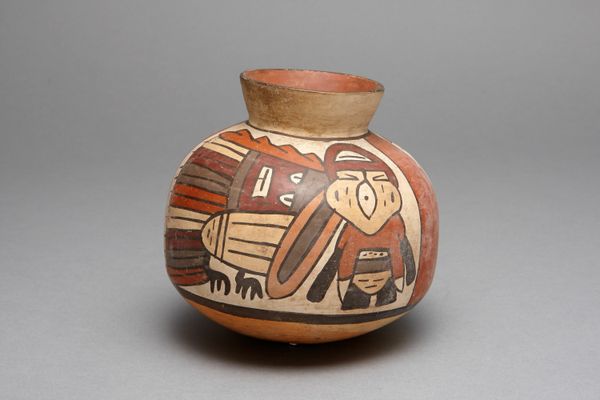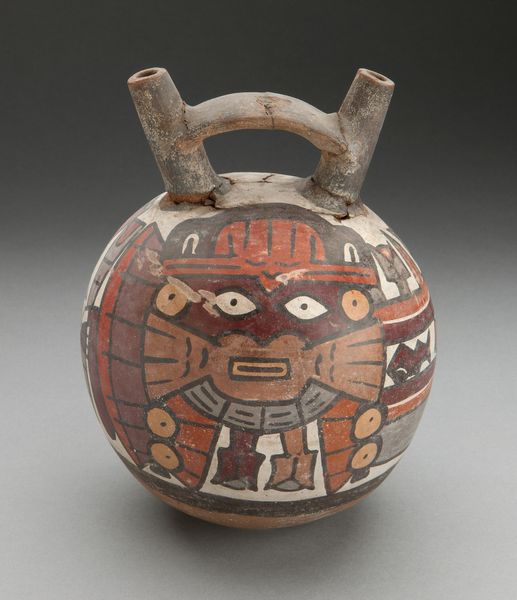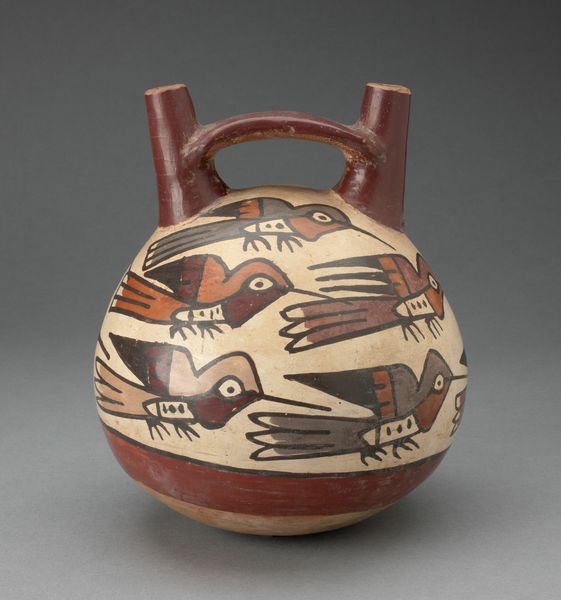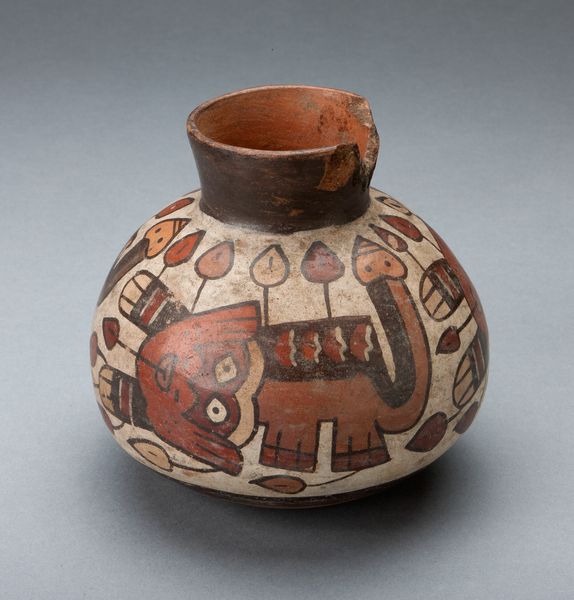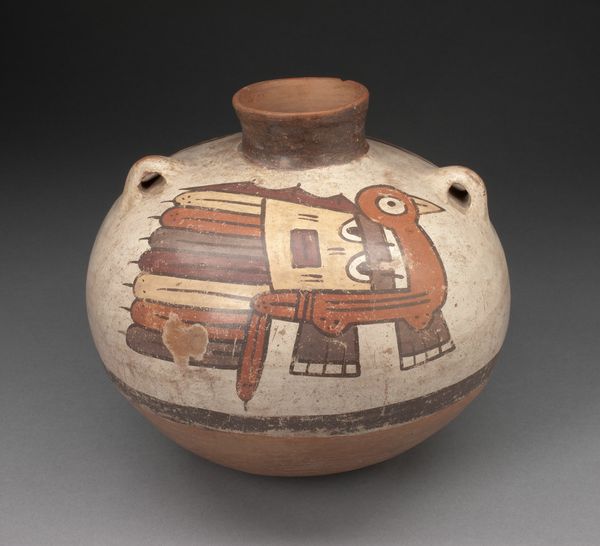
Handeled Jar Depicting Costumed Ritual Performer with Weapons c. 180 - 500
0:00
0:00
ceramic
#
ceramic
#
figuration
#
vessel
#
ceramic
#
indigenous-americas
Dimensions: 19.1 × 21 cm (7 1/2 × 8 1/4 in.)
Copyright: Public Domain
Curator: Here we have a handled jar from the Nazca culture, created sometime between 180 and 500 CE. It's currently part of the collection at The Art Institute of Chicago, and depicts what appears to be a costumed ritual performer with weapons. Editor: My first impression is one of contained power. The jar’s rounded shape feels both grounded and like it’s ready to be set in motion, especially with that striking central figure dominating the surface. Curator: It’s a potent image, isn’t it? What's interesting is the ritual performance aspect—I immediately think of identity and transformation through the lens of Nazca beliefs about war, possibly involving the acquisition of power through ritual combat and performance. How might materials factor in? Editor: Absolutely, think about where the clay itself comes from – the earth, a local resource, inherently tied to place. And the labour needed, from collecting to shaping, painting, firing. These ceramics had a value beyond their simple use as vessels; the social act of production itself contributed to their worth. Also how these objects are made accessible today tells us as much as we can derive from historical material facts alone. Curator: That makes me consider the geometric patterns adorning the jar, contrasting with the figuration; were those abstracted references connected to land and resource ownership, signalling control and power dynamics? Editor: Very possibly. And, looking at the way the paints have been applied, you can almost see the hand of the artisan – the individual labor and skill etched into its creation. Did specialized workshops produce them or could an artisan, using relatively modest means, independently realize each jar, for example? How would access affect community relations in terms of class and belonging? Curator: I agree that it makes one question class. Looking at the craftsmanship involved, it appears that some knowledge of special application had to take place. I wonder about how they taught these artisans? Perhaps even a matriarchal system in which knowledge was passed between women, in light of historical context? Editor: Indeed. Understanding all that’s tied into producing one is a deep-dive into their way of life, as much if not more than we might derive from, say, the iconography depicted. Curator: Ultimately, examining an object like this shows us the intersectional complexities inherent in Nazca society – their spiritual beliefs, social structures, and artistic expressions—which can become easier with awareness around who made what and why. Editor: Right, acknowledging the physical means and socio-historical conditions allows for a better understanding how even seemingly simple works carry layered meanings that remain ever relevant.
Comments
No comments
Be the first to comment and join the conversation on the ultimate creative platform.
